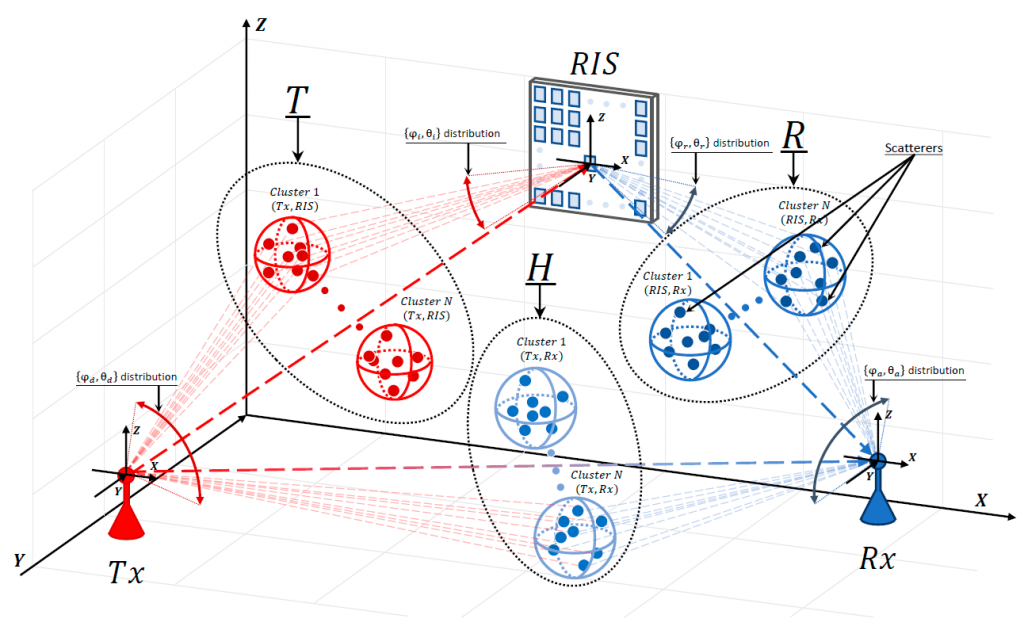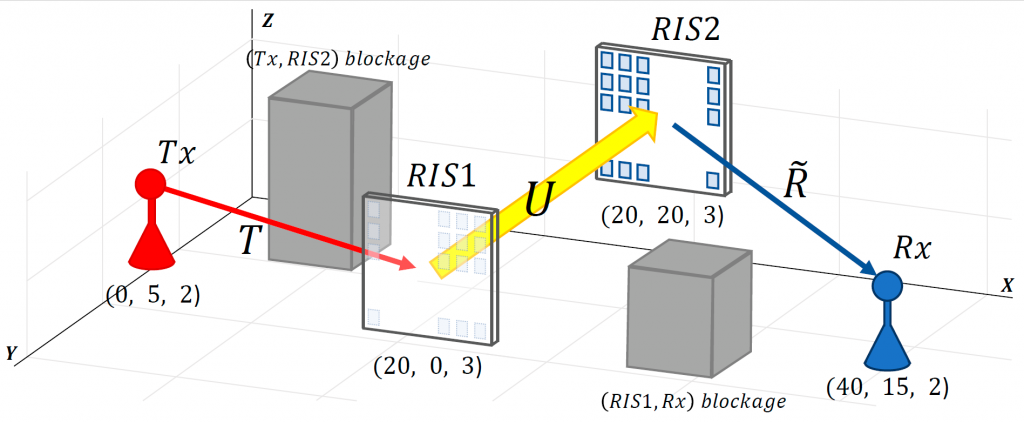QRIS Simulation Platform

Reconfigurable Intelligent Surfaces (RIS) are a promising way to improve the performance of wireless networks.
However, despite the high interest in RIS in the research community, no flexible simulation platform allows studying the performance of RIS-aided wireless communication systems in complex scenarios.
To address this issue, WNL and Telecommunication Systems Lab of HSE have designed an open-source simulation platform, called QRIS.
QRIS is based on the QUAsi Deterministic Radio channel GenerAtor (QuaDRiGa), which already supports many well-approved channel models for various wireless technologies and indoor/outdoor scenarios. Its essential features are taking into account such physical effects as shadowing and accurate modeling of spatial consistency, which is important for scenarios with MIMO.
QRIS can be used to evaluate RIS-aided system performance in various geometric locations with different numbers of UCs, operating frequencies, and scenario configurations. A distinctive feature of QRIS is the ability to consider the simultaneous usage of several RISs and their interaction.
QRIS has flexible RIS architecture and is suitable for the study of various UC radiation patterns, including realistic ones, obtained from real measurements or comprehensive simulation using CST Microwave Studio

To get more information about QRIS, please read the paper below.
Please cite this paper if you use QRIS.
To get QRIS, please fill in the form below.
